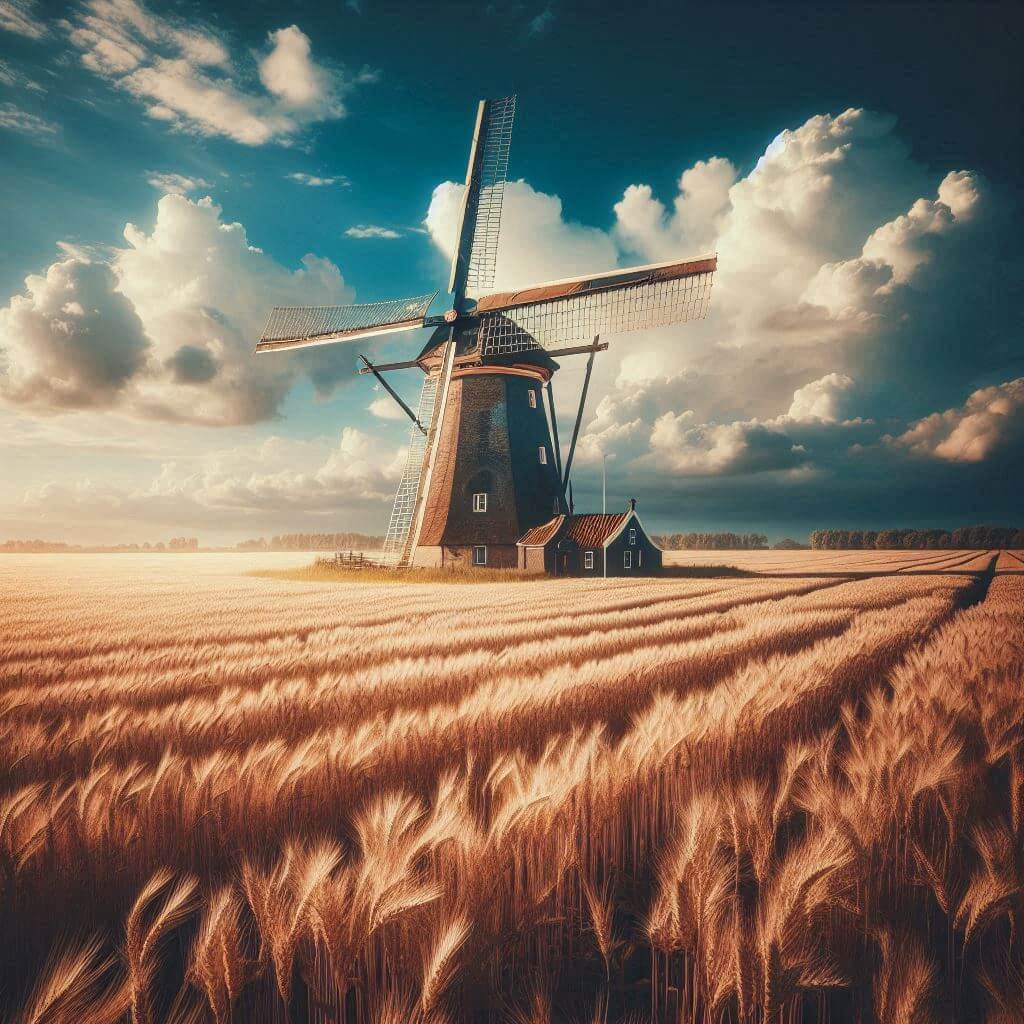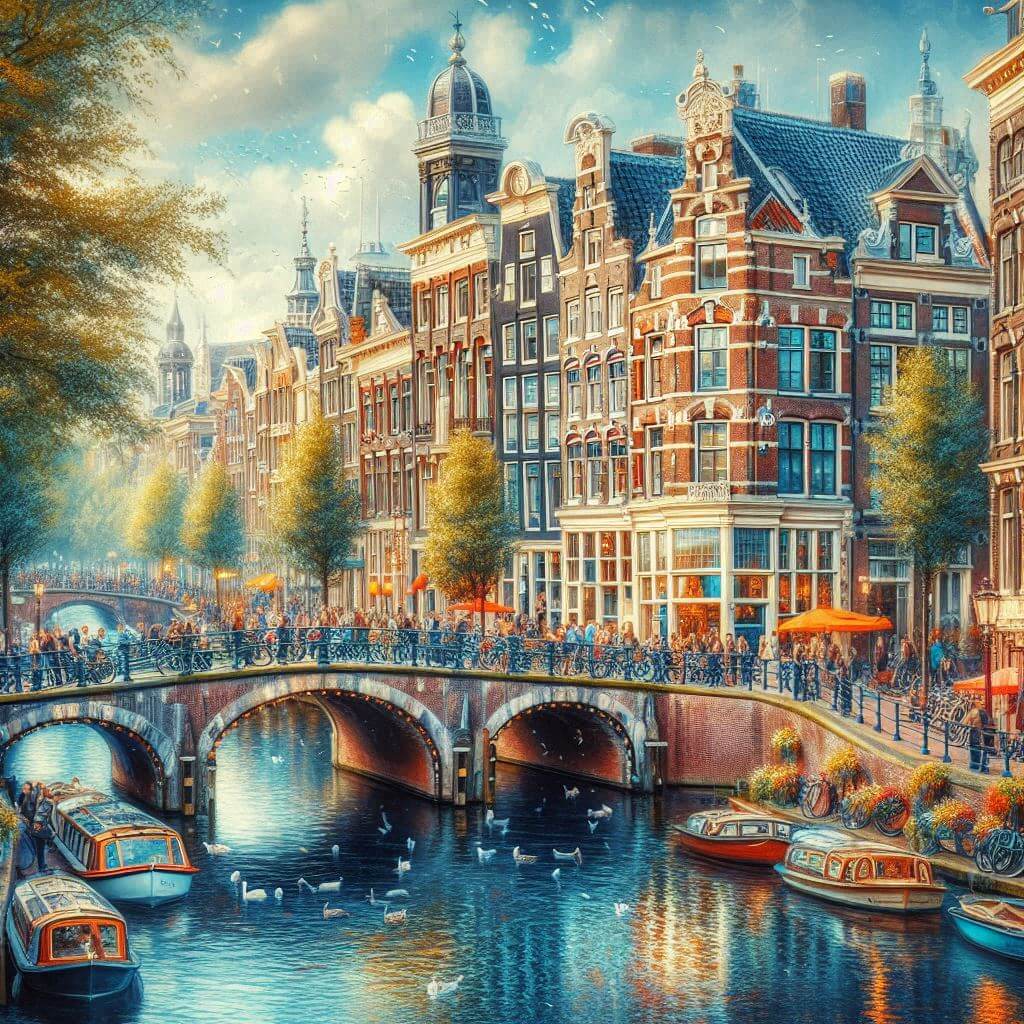The flag of the Netherlands, also known as the Dutch flag, consists of three equal horizontal bands of bright red (top), white (middle), and cobalt blue (bottom). This simple yet striking tricolor design is one of the oldest and most influential national flags in the world.
Netherlands information
| National Flag Day | — |
| Sovereign state | Yes |
| Official name | Kingdom of the Netherlands |
| Capital | Amsterdam |
| Population | 17,282,163 |
| Area | 41,543 km² |
| Currency | Euro (EUR) |
| Language | Dutch, Frisian |
| Continent | Europe |
| Region | Western Europe |
| Subregion | Benelux |
| Borders | Germany, Belgium |
| Timezone | CET (UTC+1) / CEST (UTC+2) |
| Calling code | +31 |
| Top-level domain | .nl |
History of the Dutch Flag
 The origins of the Dutch flag date back to the 16th century during the Dutch Revolt against Spanish rule. Initially, the flag featured orange instead of red, known as the Prinsenvlag (Prince's Flag), in honor of William I, Prince of Orange, who led the rebellion. Over time, the orange band was gradually replaced by red, likely due to the availability and durability of red dye. The current version of the flag was officially adopted on February 19, 1937, although it had been in use for centuries before that.
The origins of the Dutch flag date back to the 16th century during the Dutch Revolt against Spanish rule. Initially, the flag featured orange instead of red, known as the Prinsenvlag (Prince's Flag), in honor of William I, Prince of Orange, who led the rebellion. Over time, the orange band was gradually replaced by red, likely due to the availability and durability of red dye. The current version of the flag was officially adopted on February 19, 1937, although it had been in use for centuries before that.
Symbolism and Design of the Dutch Flag
The colors of the Dutch flag carry significant symbolism:
- Red represents bravery, strength, valor, and hardiness.
- White symbolizes peace, honesty, and cleanliness.
- Blue stands for loyalty, justice, and vigilance.
Usage and Significance of the Dutch Flag
 The flag of the Netherlands is widely used and deeply cherished by the Dutch people. It is flown on government buildings, schools, and private homes, especially during national holidays and royal celebrations. Notable occasions include King's Day (April 27) and Liberation Day (May 5). In maritime traditions, the Dutch flag is prominently displayed on ships, reflecting the country's long history as a naval power. Internationally, the flag represents the Netherlands at diplomatic events, sports competitions, and cultural exchanges, embodying Dutch identity and values on the global stage.
The flag of the Netherlands is widely used and deeply cherished by the Dutch people. It is flown on government buildings, schools, and private homes, especially during national holidays and royal celebrations. Notable occasions include King's Day (April 27) and Liberation Day (May 5). In maritime traditions, the Dutch flag is prominently displayed on ships, reflecting the country's long history as a naval power. Internationally, the flag represents the Netherlands at diplomatic events, sports competitions, and cultural exchanges, embodying Dutch identity and values on the global stage.
Interesting Facts About the Dutch Flag
- The Dutch flag is often confused with the flag of Luxembourg, which has a slightly lighter shade of blue.
- On royal birthdays, it is customary to fly the Dutch flag with an orange pennant above it, acknowledging the royal House of Orange-Nassau.
- The flag's colors have inspired the national sports colors, with Dutch teams often wearing orange as a nod to the country's royal heritage.
- During the Dutch Golden Age (17th century), the flag became a symbol of the country's maritime dominance and economic prosperity.
- The exact shades of red and blue in the flag were officially standardized in 1958 to ensure consistency in its representation.